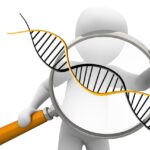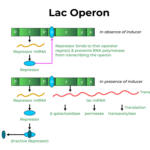Haemophilia is a hereditary bleeding disorder that affects the normal process of blood coagulation. It is an X-linked and recessive genetic disorder, which is why it predominantly attacks male persons, while the carrier status is maintained by females. The disease essentially serves as a major risk factor in causation of exorbitant massive complications, even from the slightest injuries, often jeopardizing a chance of survival. It is sometimes termed as “bleeder’s disease.“
Historical Background
- The earliest case of haemophilia was reported in the sacred text of the Jews known as Talmud.
- In the 12th century, an Arabian physician, Albucasis, treated a family of males who died of excessive bleeding following very slight injuries.
- In 1803, John Edward Otto proved that haemophilia was indeed an inherited disease.
- Most probably the disease due to mutation in the antihaemophilic globulin gene leading to fail in the production of clotting factors VIII, IX, or XI.
- The rogue gene is carried on the X chromosome responsible for lacking the required alleles for making clotting factors.
Types of Haemophilia
Two types of haemophilia are ‘A’ and ‘B.’ The two classifications are dependent on the missing clotting factor.
1. Haemophilia A
– There is initially a problem resulting from a mutation of the clotting factor VIII gene, causing suppression of required clotting factor.
– This one is the most prevalent of the cancers. The deficient clotting factor here is “**factor VIII**.” The cause is a mutation of the antihaemophilic globulin (AHG) gene.
– Symptoms: It varies from spontaneous nasal hemorrhage to generalized internal bleeding throughout the organs, muscles, and joints.
– Prevalency: It affects about 1 in 5,000 newborn males.
– Diagnosis: Case history, blood test, and coagulation test for the evidence of factor VIII Level.
– Treatment: Recombinant factor VIII injections. In severe case condition, intervening doses are given to control or arrest bleeding episode.
2. Haemophilia B (Christmas Disease)
– Caused due to deficiency of clotting factor IX.
– Signs and symptoms: Basically similar to that of hemophilia A, the etiology is the deficiency of factor IX.
– Incidence: 1 in 25,000 ages of male newborns.
– Historical Note: Named after Stephen Christmas, the first published case in 1952.
– Treatment: Infusions of recombinant factor IX or plasma transfusions in a few cases.
Haemophilia A is that subtype of disease wherein an individual is born from a family member with a deficiency of clotting factor VIII. Haemophilia A is thus the most common form of the disease, while Haemophilia C is a rare type. Both types exhibit differences with regards to clinical presentation and treatment modes. The pharmacological management has as its main aim to enhance the patient’s quality of life. The treatment of haemophilia A involves clotting factor concentrates, which can be recombinant or which can be derived from human plasma. Treatment requires to be initiated in the least acute time frame. Otherwise, long-term joint damage and contractures will be seen. The prognosis in circumstances such as these is not encouraging.
An important aspect describes the mechanism by which spontaneous bleeding occurs in cases of less than severe pathogeny. However, major bleeding will occur either during a surgical intervention or, much more frequently, due to trauma. Such injuries include, among others, damaging bone tissue, open internal tissue injuries, and hypertrophic bleeding. Tests for clotting factors XI and medical history have established treatment protocols. In some cases of surgical procedure or medical intervention, as plasma transfusions are introduced, they are not required for the everyday management of blood.
Acquired hemophilia refers to the form of hemophilia in which, due to autoimmune conditions, the clotting factors are destroyed. This could manifest with advancing years, occur with pregnancy or as a component of other autoimmune diseases.
Symptoms of hemophilia vary based on the severity of the disease and include:
- Severity of bleeding: spontaneous joint or muscle hematomas, easy bruising, extended bleeding from the nose or gums.
Diagnosis
- Clotting factor levels: Levels of factors VIII, IX, and XI; and severity of disease.
The bleeding should be well controlled and all efforts should be made to stop bleeding in the acute phase. Prophylactics are the first line of treatment and are supported only by regulations on control of hemophilia. Most major hemophiliacs tend to stay much longer in their primary treatment phase, which greatly outweighs the risk for surgical interventions. The “on-demand treatment” strategy, designed to “add” the bleeding that happens or prospectively the initiation of treatment for uncontrolled bleeding, can initiate the initiation of a prophylactic treatment based on the patient’s risk of bleeding in two scenarios.
Special Techniques
Again, one can have a port placed beneath the skin permanently giving easy access to venous injections with much less pain and inconvenience to the patient since it is avoided in repetitive fashion.
Conclusion
Haemophilia is a challenging disease; however, truly the modern medical treatments such as recombinant clotting factors and prophylactic therapies make the life of a patient liveable. The avoidance of complications secondary to the disease is provided by lifelong follow-up and treatment.
Engage with Us:
Stay tuned for more captivating insights and News. Visit our Blogs , Science paper , Study Portal and Follow Us on social media to never miss an update. Together, let’s unravel the mysteries of the natural world.



















